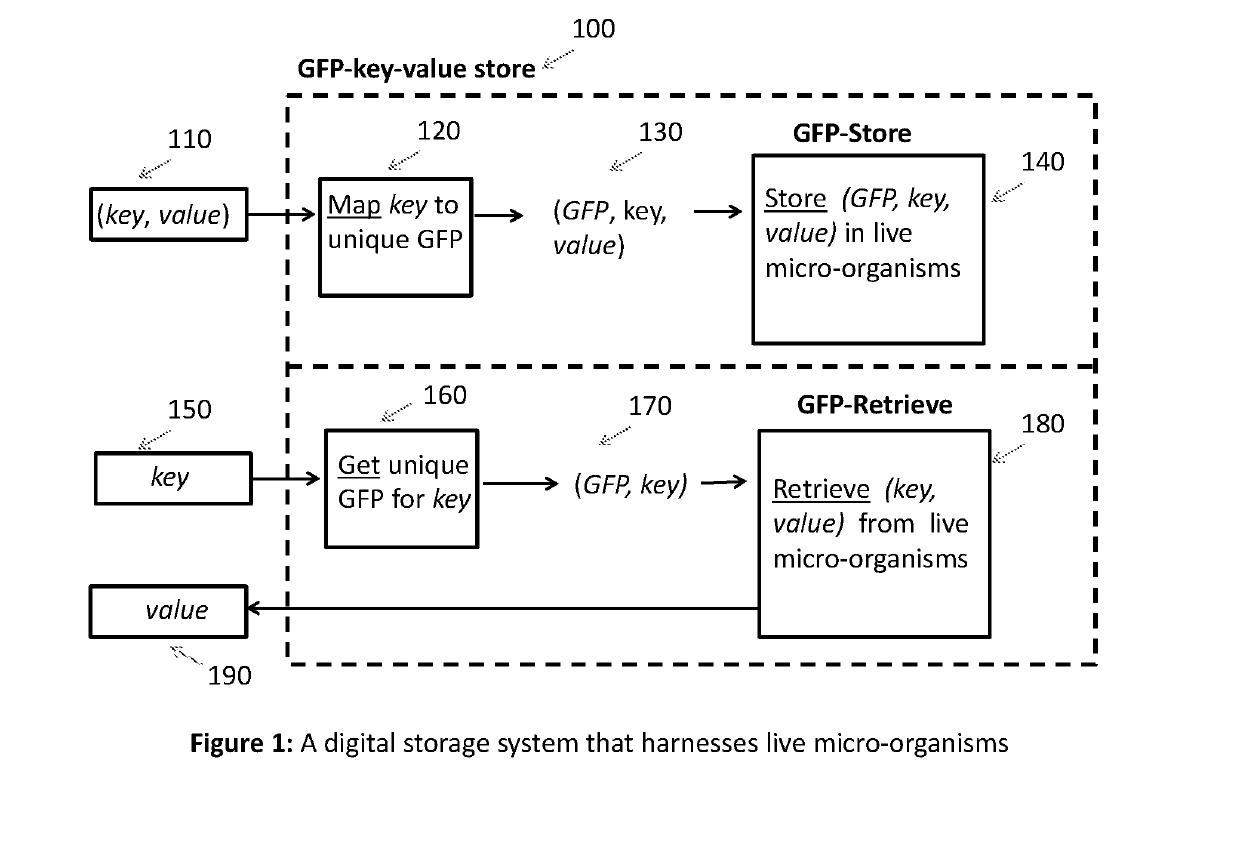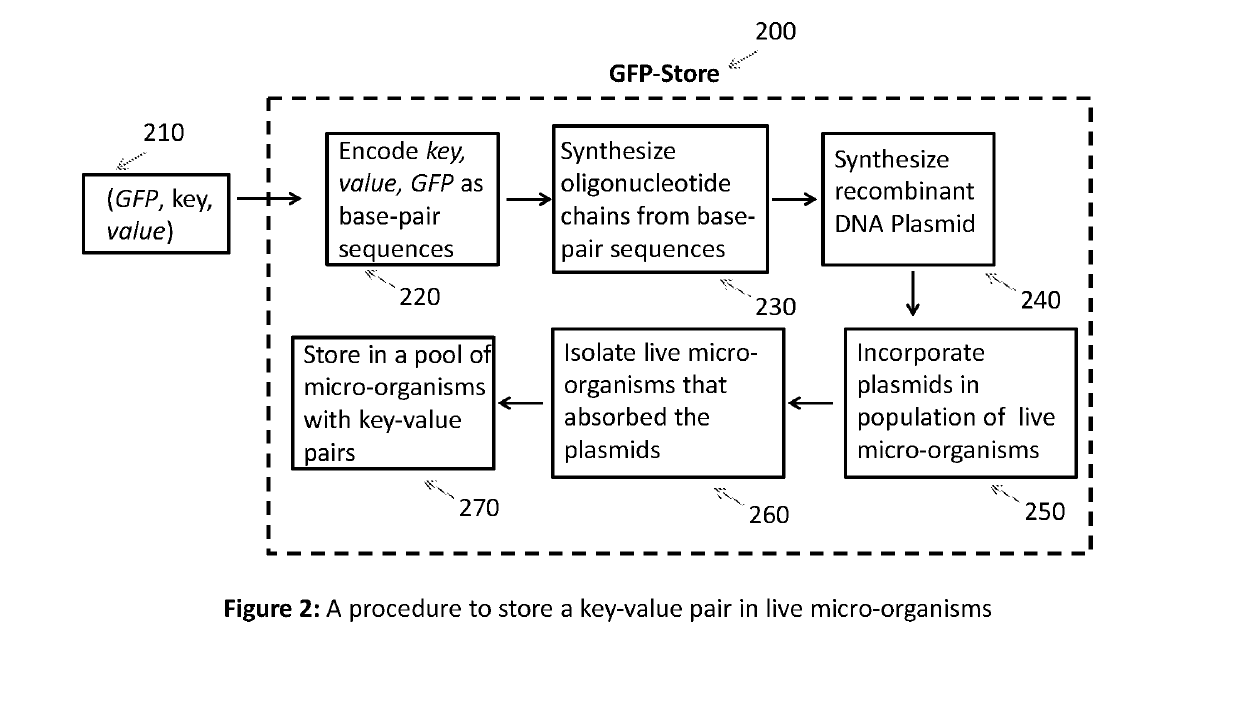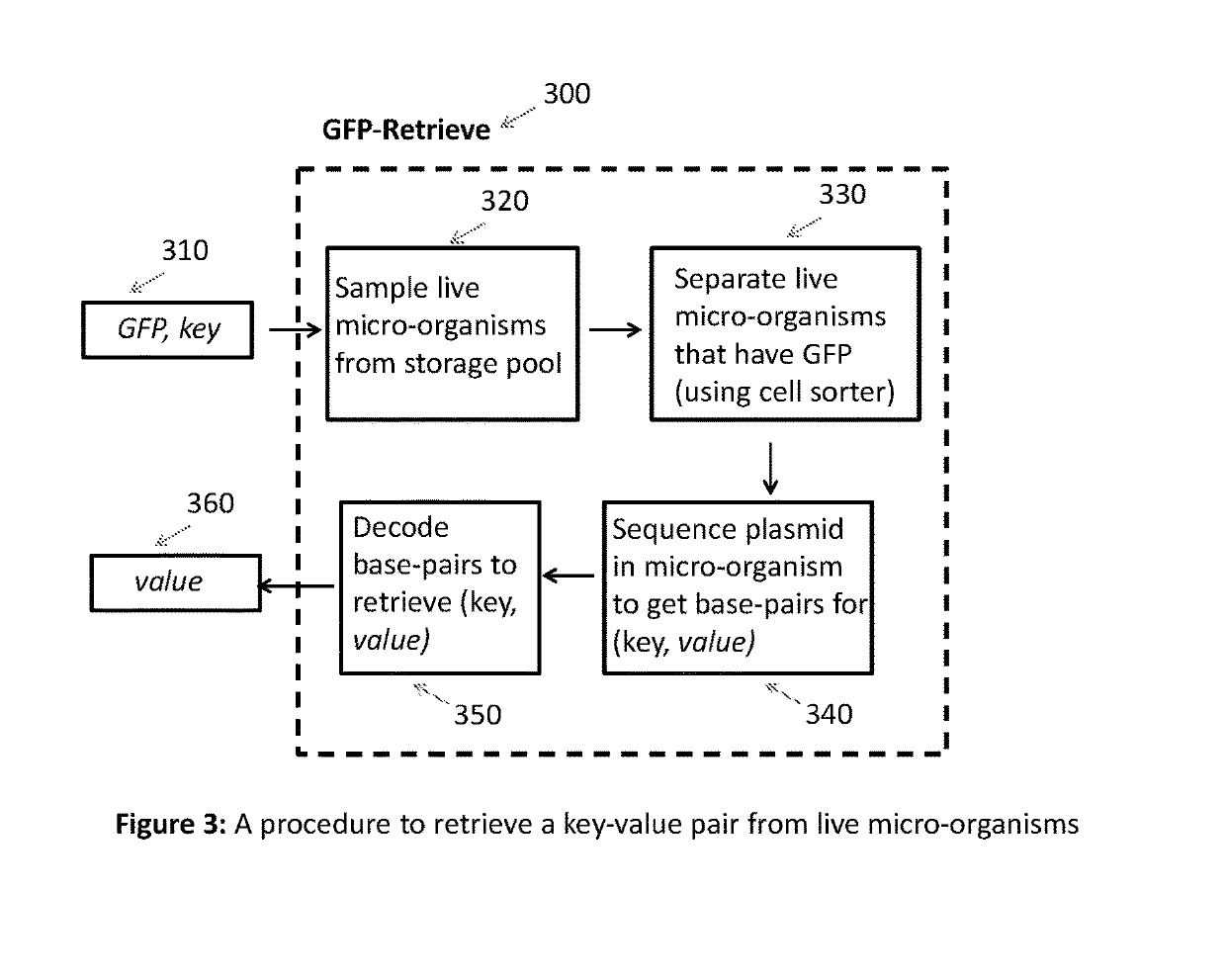Key-value store that harnesses live micro-organisms to store and retrieve digital information
- Summary
- Abstract
- Description
- Claims
- Application Information
AI Technical Summary
Benefits of technology
Problems solved by technology
Method used
Image
Examples
Embodiment Construction
[0018]Key-value store: Digital information is represented as a collection of records, which in turn can have many different fields within them. Each record is a value, and these records are stored and retrieved using a key that uniquely identifies the record. A key-value pair consists of a record and a key that uniquely identifies the record. A key-value store is a data storage scheme for storing and retrieving key-value pairs. Given a key, a key-value store can quickly retrieve the value. This type of data structure is also known as dictionary or hash.
[0019]Overview of proposed DNA digital store: FIG. 1 shows an overview of the proposed DNA digital store. Given a key-value pair 110, the key is mapped to a unique gene that expresses a fluorescent protein (GFP). The mapping of keys to GFPs is maintained in a two-column table 120. This mapping ensures that every key is mapped to a unique GFP. The combination of GFP, key and value 130 is presented to the GFP-Store 140, which stores the...
PUM
| Property | Measurement | Unit |
|---|---|---|
| Electrical resistance | aaaaa | aaaaa |
| Fluorescence | aaaaa | aaaaa |
| Magnetism | aaaaa | aaaaa |
Abstract
Description
Claims
Application Information
 Login to View More
Login to View More - R&D
- Intellectual Property
- Life Sciences
- Materials
- Tech Scout
- Unparalleled Data Quality
- Higher Quality Content
- 60% Fewer Hallucinations
Browse by: Latest US Patents, China's latest patents, Technical Efficacy Thesaurus, Application Domain, Technology Topic, Popular Technical Reports.
© 2025 PatSnap. All rights reserved.Legal|Privacy policy|Modern Slavery Act Transparency Statement|Sitemap|About US| Contact US: help@patsnap.com



